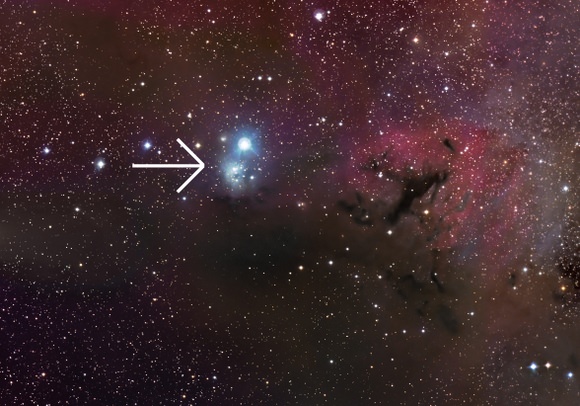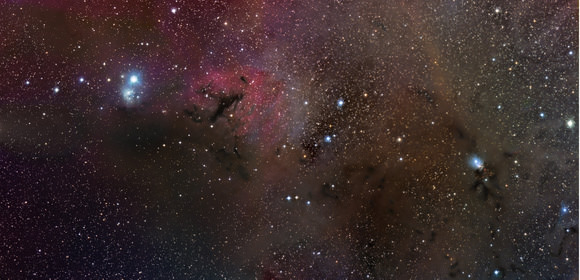[/caption]
Astronomers have found three brown dwarfs with estimated masses of less than 10 times that of Jupiter, making them among the youngest and lowest mass sub-stellar objects detected in the solar neighborhood to date. “There has been some controversy about identifying young, low mass brown dwarfs in this region,” said Andrew Burgess, one of the astronomers who used the Canada-France-Hawaii Telescope (CFHT) to find the objects. “The fact that we have detected three candidate low-mass dwarfs towards IC 348 supports the finding that these really are very young objects.”
A team of astronomers from the Laboratoire d’Astrophysique de l’Observatoire de Grenoble (LAOG), France made the discovery, and Burgess presented their findings at the European Week of Astronomy and Space Science at the University of Hertfordshire.
The dwarfs were found in a star forming region named IC 348, which lies almost 1000 light years away, towards the constellation of Perseus. This cluster is approximately 3 million years old – extremely young compared to our 4.5 billion year old Sun – which makes it a good location in order to search for the lowest mass brown dwarfs. The dwarfs are isolated in space, which means that they are not orbiting a star, although they are gravitationally bound to IC 348. Their atmospheres all show evidence of methane absorption which was used to select and identify these young objects.

The team set out to find a population of these brown dwarfs in order to help theoreticians develop more accurate models for the distribution of mass in a newly-formed population, from high mass stars to brown dwarfs, which is needed to test current star formation theories. The discovery of the dwarfs in IC 348 has allowed them to set new limits on the lowest mass objects.
An object of a similar mass was discovered in 2002, but some groups have argued that it is an older, cooler brown dwarf in the foreground coinciding with the line of sight.
”Finding three candidate low-mass dwarfs towards IC 348 backs up predictions for how many low-mass objects develop in a new population of stars. Brown dwarfs cool with age and current models estimate that their surfaces are approximately 900-1000 degrees Kelvin (about 600-700 degrees Celsius). That’s extremely cool for objects that have just formed, which implies that they have the lowest masses of any of this type of object that we’ve seen to date,” said Burgess.
Source: RAS


These are not brown dwarfs (they are too small), but they are not planets, either…
http://www.dtm.ciw.edu/boss/definition.html
Let the definitional wars commence!
(Wanders off, cackling evilly.)
Yeah I thought in order to be a brown dwarf by definition minimum they have to be at least ten times the mass of Jupiter if not more otherwise they’d be considered a very large gas giant instead. There have been gas giants eight times the size of Jupiter that aren’t considered to be brown dwarfs even though their composition is the same as one.
Then again I was browsing on wikipedia (Yes they’re accurate because many of the astrophysicists at the universities including many of my professors from the University of Washington cleaned it up) and found Cha 110913-77344 to be roughly 8 times the size of Jupiter plus 7 times Jupiter’s mass or minus 3 times Jupiter’s mass. I’ve also read about brown dwarfs up to 70 times the mass of Jupiter.
Anyone have a clear definition on it?
If they have a thermonuclear fusion reaction with deuterium then they could be brown dwarfs right? But isn’t it calculated the minimum mass for that is 13 times the mass of Jupiter? Perhaps the math is wrong on that. There doesn’t seem to be a clear definition of a brown dwarf and Buddha sized gas giants haha
Spider Moose, the link I gave is the current IAU working definition. It’s sorta clear, except it doesn’t actually provide a word for these non-planets.
I think their approach of only having a working definition is a sensible one, but it’ll be interesting to see if they can hold out against the pressure to be simplistic.
So, what they have essentially found (and the evidence for this seems to have been building for some time) is that gaseous objects come in a continuum of sizes and masses. Hence, it seems the only sensible distinctions are whether the object is undergoing fusion, or whether it is orbiting an object undergoing fusion. Everything else would seem to be nitpicking.